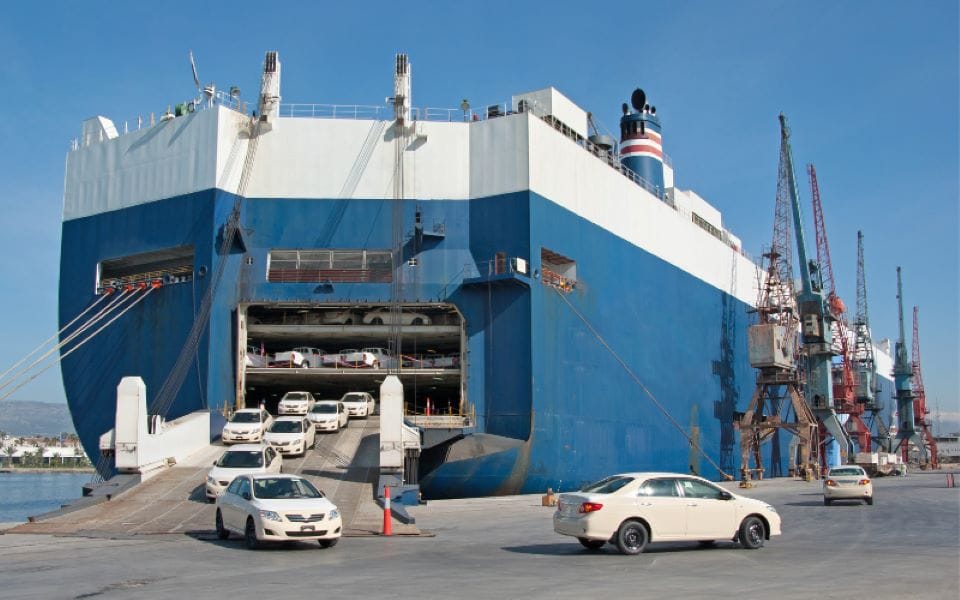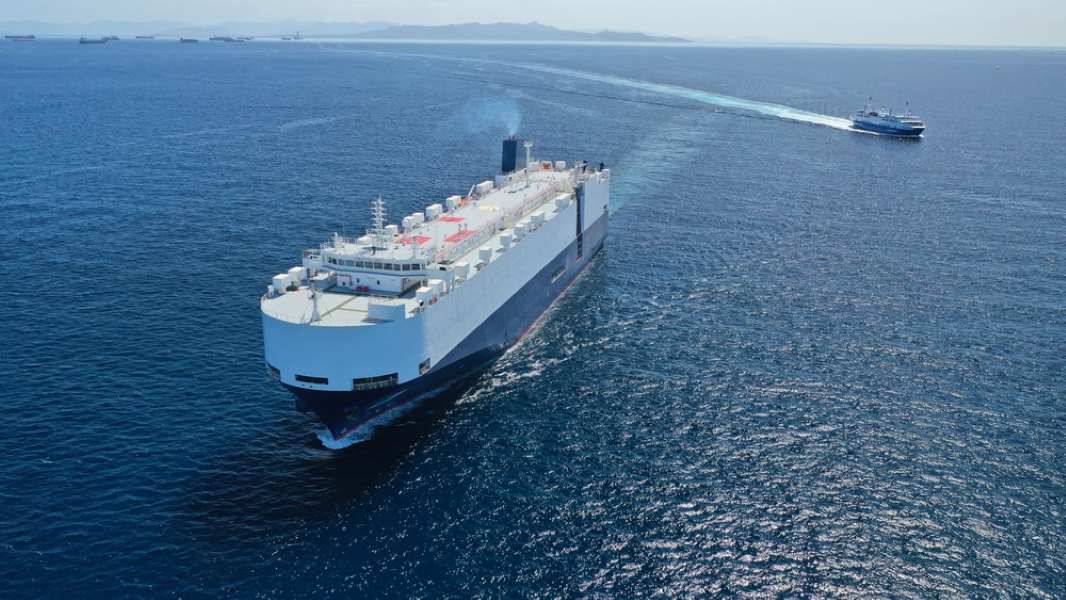Sea Freight is the most common mode of transport in international trade, and RoRo Ship is one of the important components of sea transport. Reasonable selection of sea transport service types helps to optimize the transport plan. This article will introduce this in detail to help understand RoRo Ship.
You may also be interested in: What is Bulk Cargo Shipping in International Trade

What is RoRo?
RoRo Ship (Roll-on/Roll-off) is a sea transport method designed for transporting vehicles, mechanical equipment and other rollable goods. The goods are directly driven into or out of the cabin from the port by their own power or traction device without the use of lifting equipment.
This method greatly improves loading and unloading efficiency, reduces the risk of cargo damage, and reduces the transit and loading and unloading time in the intermediate links.
Characteristics of RoRo Ships
RoRo Ship has many advantages and is the first choice for transporting vehicles and heavy machinery:
- Efficient loading and unloading: Roll-on/Roll-off Ships are designed with special ramps or gangways, and the goods can be directly driven on and off the ship, which greatly improves the loading and unloading efficiency.
- Strong flexibility: The route of the Roll-on/Roll-off Ship is relatively flexible, and can be adjusted according to customer needs and market conditions to provide door-to-door transportation services.
- High safety: RoRo ships have many decks, which are connected by ramps or large elevators. There are no transverse bulkheads in the cargo hold and few pillars, which ensure that vehicles can pass through the hold unimpeded, reducing the risk of cargo damage.
- Wide transportation network: RoRo ships usually run on fixed routes, covering multiple ports around the world, providing efficient international logistics services.
- Reduced transportation costs: The loading and unloading process is simple, reducing the cost of equipment use and labor costs.
Types of RoRo Ships
RoRo ships have a variety of designs to accommodate different types of cargo, from personal vehicles to industrial equipment. Understanding the different types of RoRo ships can help companies choose the option that best suits their transportation needs.
Pure RoRo (PCC)
Pure car carriers are designed for transporting cars. These ships have multiple decks with adjustable heights to accommodate vehicles of various sizes. Automakers often use pure car carriers to transport vehicles from production plants to global markets.
Pure Car and Truck Carriers (PCTC)
Pure car and truck carriers expand on the capabilities of PCCs to handle large vehicles such as trucks, buses, and construction machinery. These vessels are equipped with reinforced decks and larger ramps, giving them the flexibility to carry a variety of wheeled cargoes.
RoRo/Container Combined (ConRo)
ConRo ships combine the capabilities of container ships and RoRo ships, and can transport both wheeled and containerized cargoes. This dual-purpose design makes ConRo ships a flexible choice for mixed cargo routes.
Heavy RoRo ships
Large Heavy RoRo ships are designed for transporting oversized heavy machinery such as cranes, bulldozers and agricultural equipment. With reinforced decks and high cargo hold clearance, these ships are ideal for transporting industrial vehicles that cannot fit into standard containers.
Cost Estimation for RoRo Shipping
The cost of RoRo shipping is affected by a variety of factors:
- Cargo Type and Size: The size and dimensions of different vehicles determine the cost of shipping
- Port Fees: Port loading and unloading fees and operating costs are an important part of RoRo shipping.
- Insurance and Additional Services: For high-value goods, insurance costs will increase, and services such as logistics tracking, cargo handling, and customs clearance will also increase the total cost of transportation.
RoRo shipping costs are usually calculated by tonnage or per piece, and the specific cost range is as follows:
- Standard small vehicle: The cost of shipping each vehicle is roughly between $800-1,000 (short distance).
- Heavy equipment or machinery: Shipping can be as high as $2,000-5,000, depending on the distance and size of the equipment.
- Intercontinental shipping: From China to Europe or America, it may cost $3,000-8,000, depending on the specific port and shipping distance.

How to Choose RoRo Shipping Service
Understand cargo needs
Determine the cargo type, volume, weight, and special requirements, such as reinforcement measures or loading and unloading assistance.
Choose the right ship type
Choose the right RoRo ship type according to the nature of the cargo, such as a pure RoRo ship or a hybrid ship.
Evaluate shipping routes and times
Choose a service provider with a wide route coverage and stable arrival time.
Check shipping qualifications
Make sure the RoRo service provider has legal qualifications and a good industry reputation.
Track and monitor cargo transportation
During the cargo transportation process, understand the transportation status and location of the cargo through the tracking system provided by the transportation company or keep in touch with the transportation company.
Learn more: How to Choose China Freight Forwarder
Roll-on/roll-off ship transportation plays an important role in international logistics due to its high efficiency, safety and flexibility. It is particularly suitable for the transportation of automobiles, machinery and special cargo. According to the introduction in this article, you can make a reasonable choice to ensure the safe and fast arrival of your goods.
